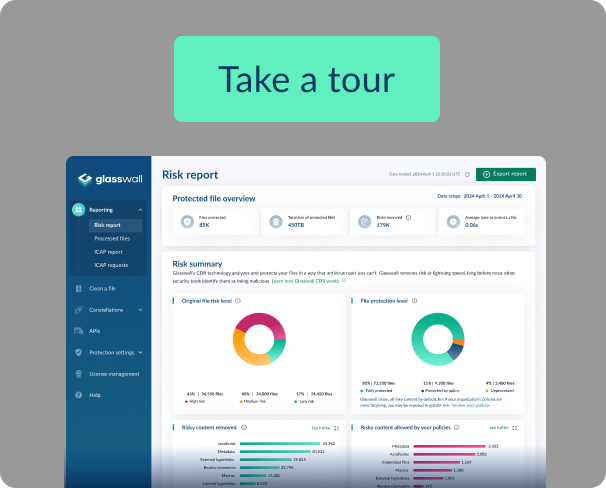Achieving industrial scale to secure file-based threats
Organisations today are faced with a multitude of vulnerabilities and must employ a variety of technologies and processes to protect themselves against constantly evolving threats.
Securing systems against the risk posed by file-based attachments forms part of a comprehensive approach to issues such as ransomware and zero day threats.
CISOs and security professionals are under constant pressure to deliver cybersecurity solutions that minimise impact on business productivity and deliver the scale and speed required to support rapidly evolving business needs.
Content Disarm and Reconstruction (CDR) – a solution-based file protection software – can provide greater confidence in received files that are rebuilt to a known good standard, helping businesses keep cyberthreats at bay without impeding user productivity.
The Glasswall Cloud-Native CDR Platform automatically removes potential threats from every file, without sacrificing productivity. Built on flexible and scalable infrastructure, using Kubernetes, it enables organisations to spin up CDR clusters to suit its needs, providing a highly responsive, infinitely scalable solution to file-based threats.
With 88% of organisations today running Kubernetes to manage containerised software, cloud-native technologies are now emphatically mainstream. Whilst devised to run in the cloud, the majority of firms run their deployments both on-premise, in traditional datacentres on public platforms such as AWS or Azure. Avoiding vendor lock-in is not as easy as you might think.
The elastic nature of Kubernetes enables organizations to secure and remove threats at industrial scale. But security teams need to consider the best options to manage Kubernetes clusters to keep continuously improving how performant and capable they can become. In-built is automated scaling, self-healing, load-balancing and horizontal scaling. Treating your clusters as ‘pets’ can be rewarding. But what if you need hyper-resilience, and the ability to scale across multiple regions? What happens when clusters don’t self-heal (yikes), and you just need your clusters to behave more like ‘cattle’?
In our latest ‘Known Good’ Podcast we discuss how teams can use the elastic nature of Kubernetes to secure and remove threats from files at industrial scale and the many different patterns that can be adopted whether that be to nurture them or simply treat them as disposable units.







.png)
